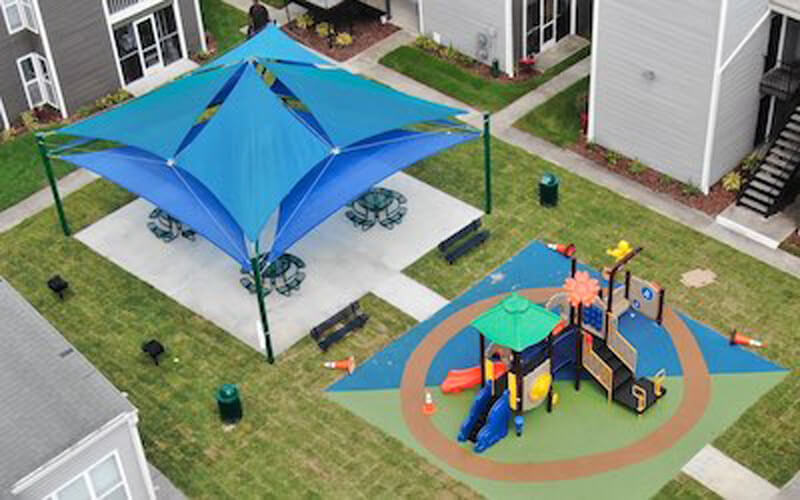Choosing the right sun shade sail for your space involves considering several factors to ensure you get the desired functionality and aesthetics. By being diligent and cautious during the purchasing process, you can maximize the benefits of using DHgate.com to buy sunshade sails. Here are some steps to guide you in selecting the appropriate shade sail:
Assess your space
Begin by evaluating the area where you plan to install the shade sail. Consider the size, shape, and layout of the space. Take note of any obstacles like trees, buildings, or structures that could affect the installation.
Determine the purpose
Decide on the primary purpose of the shade sail. Are you looking to create shade for a seating area, a pool, a playground, or a carport? Understanding the intended use will help you determine the size, shape, and orientation of the shade sail.
Measure the space
Accurately measure the area where you want to install the shade sail. Take note of the dimensions, including the length, width, and height requirements. These measurements will help you determine the appropriate size of the shade sail.
Consider the shape
Shade sails come in various shapes, including square, rectangular, triangular, and custom shapes. Choose a shape that complements the existing architecture and aesthetics of your space. Consider the available mounting points and the desired coverage area when deciding on the shape.
Determine the orientation
Assess the sun’s path throughout the day to determine the ideal orientation of the shade sail. If you want to maximize shade during specific times, orient the shade sail accordingly. Keep in mind that the angle and orientation will affect the amount of shade provided.
Select the fabric
Shade sails are typically made from high-density polyethylene (HDPE) fabric, which is durable, UV resistant, and provides good airflow. Consider the fabric’s UV protection rating, as a higher rating indicates better sun protection. Additionally, choose a fabric color that suits your preference and complements the surroundings.
Evaluate installation options
Depending on the available mounting points and the desired tensioning mechanism, you can choose between different installation options. Common methods include attaching the shade sail to existing structures, using posts or columns, or a combination of both. Ensure that the installation method you choose is suitable for your space and provides adequate stability and tension.
Set a budget
Determine your budget for the shade sail project, as costs can vary depending on the size, shape, fabric quality, and complexity of installation. Consider any additional expenses such as hardware, poles, or professional installation services.
Seek professional advice if needed
If you’re unsure about any aspect of the process or want expert guidance, consult with a shade sail supplier or a professional installer. They can provide recommendations based on your specific requirements and ensure a successful installation.
Evaluate wind and weather conditions
Take into account the wind conditions in your area. If your location experiences strong winds or inclement weather, it’s important to select a shade sail designed to withstand these conditions. Look for shade sails with reinforced edges, sturdy construction, and high-quality materials to ensure durability and longevity.
Assess the desired coverage area
Determine how much coverage you need from the shade sail. Consider the number of people or objects you want to shade and ensure the size of the shade sail can accommodate them comfortably. Keep in mind that larger shade sails may require additional mounting points or support structures.
Consider the surroundings and aesthetics
Take into account the overall aesthetics and design of your outdoor space. Choose a shade sail color and shape that complements the surrounding environment, architectural elements, and existing décor. You may want to opt for a shade sail that adds visual interest or matches the overall theme of your outdoor area.
Check local regulations and permits
Before installing a shade sail, familiarize yourself with any local regulations or requirements. Some areas may have restrictions on the size, height, or placement of shade sails. Determine if you need to obtain permits or seek approval from local authorities before proceeding with the installation.
Think about future adjustments
Consider whether you may need to adjust the position or tension of the shade sail in the future. If flexibility is important to you, choose a shade sail system that allows for easy adjustments and re-tensioning. This will enable you to adapt to changing sun angles, weather conditions, or the need for different coverage.
Seek recommendations and reviews
Research different shade sail manufacturers, suppliers, and installers. Read customer reviews and seek recommendations from friends, neighbors, or professionals in the field. Gathering insights and feedback can help you make an informed decision and find reputable suppliers or installers.
Evaluate warranty and maintenance
Look for shade sails that come with a warranty, as it provides assurance of the product’s quality and durability. Additionally, consider the maintenance requirements of the shade sail.
Summary
Remember, choosing the right shade sail involves considering the specific needs and characteristics of your space. Taking the time to evaluate these factors will help you select a shade sail that not only provides shade and protection but also enhances the overall aesthetics of your outdoor area.

